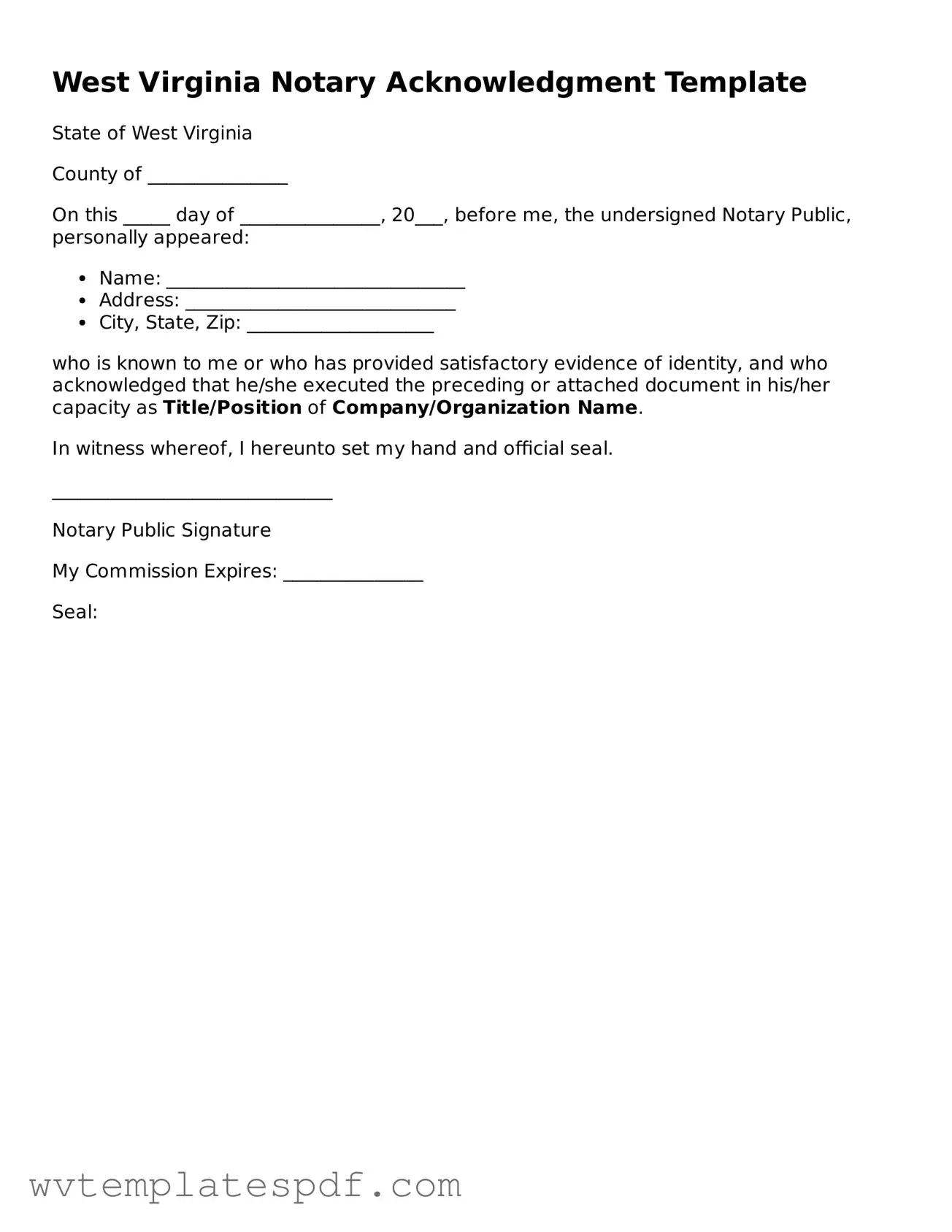The West Virginia Notary Acknowledgement form serves as a crucial document in the realm of notarization, facilitating the verification of signatures on various legal documents. This form ensures that a notary public has witnessed the signing of a document, thereby affirming the identity of the signer and their willingness to engage in the transaction. Key components of the form include the name and address of the signer, the notary's details, and a statement confirming that the signer appeared before the notary at the time of acknowledgment. Additionally, the form requires the notary's official seal and signature, which lend authenticity to the document. Understanding the importance of this form is essential for anyone involved in legal transactions in West Virginia, as it provides a layer of protection against fraud and ensures that documents are executed in accordance with state laws. Proper completion of the Notary Acknowledgement form not only upholds the integrity of the notarization process but also enhances the credibility of the documents being signed.
